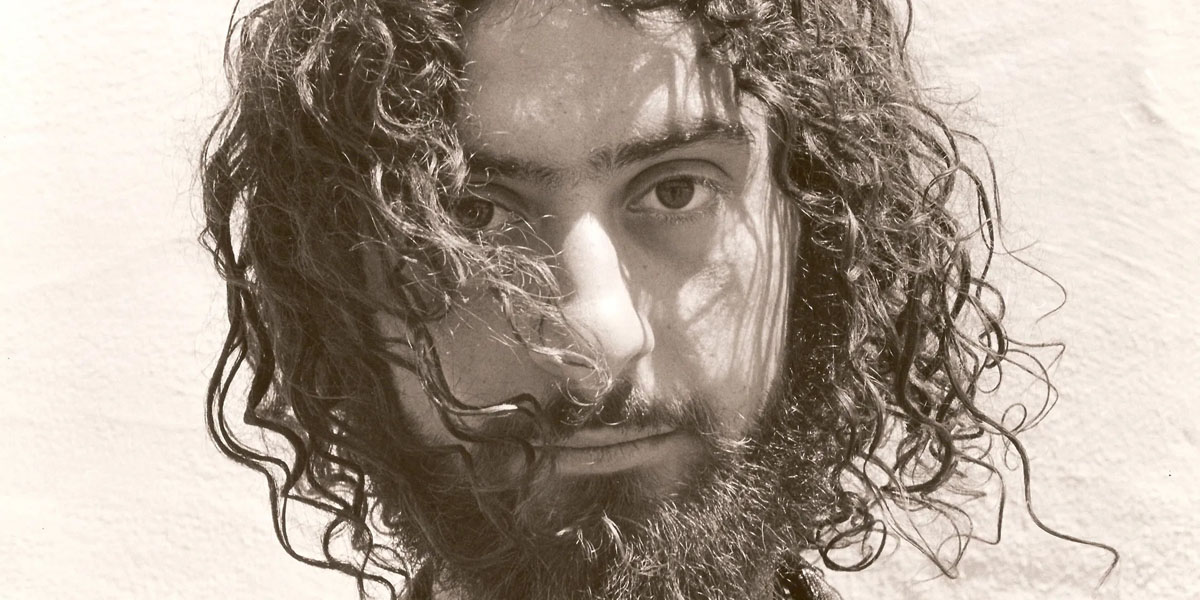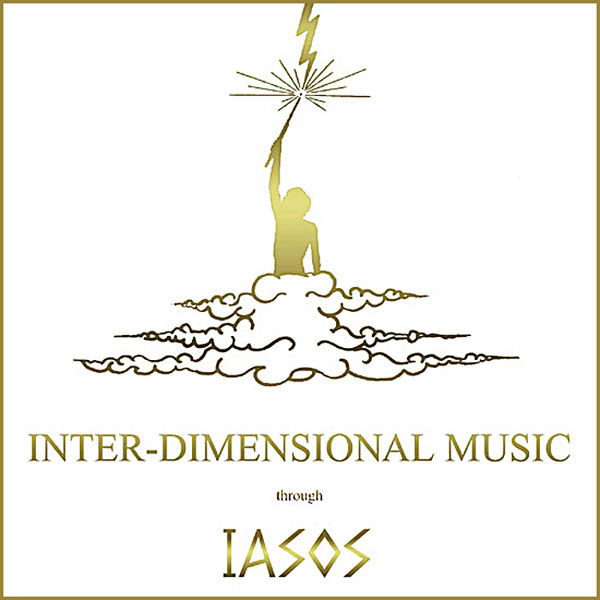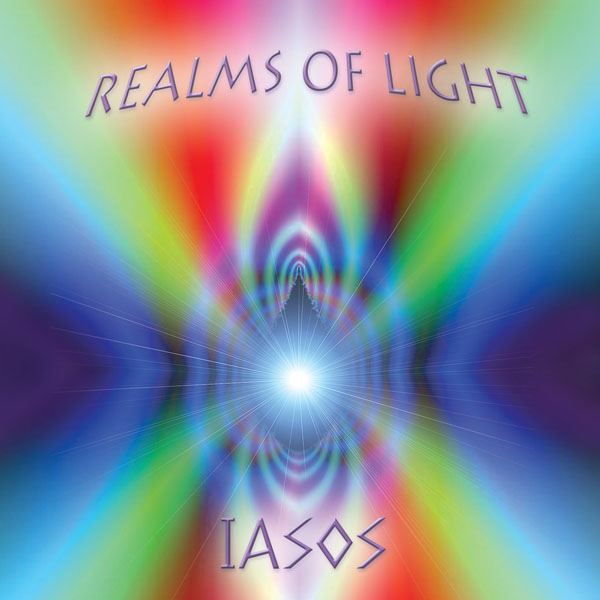New Age Pioneer Iasos Transits to a New Frequency. R.I.P.
by John Diliberto 01/09/2024
 Since new age music became a commercial phenomenon in the 1980s, many of the original pioneers have been forgotten. These are musicians who made music in their home studios and released it on small labels, often only on cassette. Artists like Steve Halpern, Dean & Dudley Evenson, Deuter, Laraaji and Larkin were on the bleeding edge of this movement. Another artist was Iasos, who released his debut album, Inter-Dimensional Music in 1975. Along with Steven Halpern’s Spectrum Suite, on which Iasos plays flute, that same year, this was ground zero for the new age music movement.
Since new age music became a commercial phenomenon in the 1980s, many of the original pioneers have been forgotten. These are musicians who made music in their home studios and released it on small labels, often only on cassette. Artists like Steve Halpern, Dean & Dudley Evenson, Deuter, Laraaji and Larkin were on the bleeding edge of this movement. Another artist was Iasos, who released his debut album, Inter-Dimensional Music in 1975. Along with Steven Halpern’s Spectrum Suite, on which Iasos plays flute, that same year, this was ground zero for the new age music movement.
Now Iasos has transitioned into one of those dimensions, leaving the planet on January 6, 2023. He was 76. Iasos was born in Greece, but his family moved to America when he was four. He studied flute and piano, got a degree in Cultural Anthropology from Cornell and made the pilgrimage to the Bay Area, just in time to have his mind blown. Reputedly, a spiritual teacher paired Iasos with a spiritual being named Vista. Vista has been a source of inspiration and direction in Iasos’s music ever since.
He never mentioned that to me when I interviewed him in 1983, but I had known his music since his earliest releases, playing them on cassette on the Diaspar and Star’s End radio shows on WXPN. This was before “new age” was a marketing term. We thought of it as space music. Iasos was enchanting, using acoustic instruments, basic synthesizers and tape effects to create imaginary landscapes.
Iasos had a wild, uncontrolled laugh that bolted into the middle of speech without warning, like an electric shock that emphasized whatever point he was making. He cloaked his music in mystical imagery.
 “There’s a curious footnote in The Urantia Book,” he says, citing a mystical tome from the first half of the 20th century that Sun Ra used to quote from as well. “They refer to the celestial musicians or the composers on higher levels that create, intergalactic paradise music. They refer to them as “‘expert emotion manipulators’.”
“There’s a curious footnote in The Urantia Book,” he says, citing a mystical tome from the first half of the 20th century that Sun Ra used to quote from as well. “They refer to the celestial musicians or the composers on higher levels that create, intergalactic paradise music. They refer to them as “‘expert emotion manipulators’.”
That description could apply to anyone from Adele to AC/DC, but Iasos was nothing like that. A lot of what Iasos said sounded like a cosmic joke. While many artists gather inspiration from nature, the imagery of outer space, the cultures of antiquity, or their own lives, the Greek born musician, who peered out from under a head of scraggly brown hair and beard, explained how he pulled his music from another dimension.
“As I do so at the risk of knowing many people think this is kind of weird or crazy,” he cautioned, bursting out in one of his manic laughs, “In my particular reality map, there are many different dimensions that co-exist in the same kind of space. And they are basically not interfering with each other, even though they occupy this space, the same space. The basic vibration is much higher and the type of life that goes there is equivalent to us, people on that level consider it tangible just like we consider this dimension tangible. And the higher levels are much more harmonious, much more beautiful, much more aesthetic. There’s much more flexibility and energy manipulation. And pattern manipulation through consciousness.”
You might think he’s citing an episode of Star Trek, but he’s actually paraphrasing Francis Bacon’s 17th century utopian book, New Atlantis.
“For example, he continued, “they have concerts there where the concert master would have maybe tiers of millions of angelic beings and he’d give out his concert through his third eye, just beaming it out, and they all be in rapturous ecstasy just listening to it. So inter-dimensional music is a humble attempt to transcribe or recreate music that is typical of these higher dimensions right here on this physical dimension using conventional earth technology.”
On albums like Inter-Dimensional Music, Angelic Music, Realms of Light and Ever Upwards, he sculpted ethereal sounds that seemed suspended in air, blown by cosmic winds. When he began creating this in the early 1970s, there was little else like it.
“Around 1967, I started hearing a totally different kind of music in my head, like a radio station, like with headphones on,” he says, describing something that in 1967 might’ve just been your average acid trip. “It was something very different than what was happening out here. It sounded very heavenly. At that time I didn’t know how to think of it. I thought of it as Paradise music. Now, of course, I call it inter-dimensional music.”
 Iasos found a serene, elegant and meticulously sculpted music in this other dimension. Even back in 1983, when I spoke with him, he was carefully crafting his sounds, manipulating synthesizers and flutes with cumbersome, but effective tape processing. He turned everything into a metaphysical metaphor. Take the idea of pre, or reverse echo, which he uses masterfully on many of his recordings.
Iasos found a serene, elegant and meticulously sculpted music in this other dimension. Even back in 1983, when I spoke with him, he was carefully crafting his sounds, manipulating synthesizers and flutes with cumbersome, but effective tape processing. He turned everything into a metaphysical metaphor. Take the idea of pre, or reverse echo, which he uses masterfully on many of his recordings.
“Curiously enough, there’s a very interesting consciousness impact from fooling around with pre-echo or pre-reverb, which is that normally sounds die away,” as he sings a sound that repeats into silence. “With pre-echo or pre-reverb, it gives you the sense of precognition and you are seeing what’s about to happen. Go-go-go-go, like that. See what I mean? Far-far-far-far-far. And so it is a model of precognition. So it tends to trigger that in people listening to music that has a lot of that in it.”
For all his wifty metaphysics, Iasos devised some finely tuned drone pieces. They aren’t that different from the more respected avant-garde work of Pauline Oliveros or David Behrman. Iasos draws an analogy between his electronic drones and those of Indian music.
“Now the beautiful thing about this is not that it is like Indian music, but that this and Indian music are both like what I would call cosmic music,” he said, laughing crazily at his comparison. “It gives a lot of sense of eternity or the fact that the present is always happening. The eternal present.”
I lost track of Iasos toward the late 80s. He’d gotten more sophisticated synthesizers and the result was a more generic sound. But he always maintained fidelity to creating other-worldly, other dimensionally music. He came to mind again a few years ago when he was including on the 2013 Light in the Attic compilation, I Am The Center: Private Issue New Age Music In America 1950-1990. Iasos continued recording right up until last year and his final release, The Garden of Salathooslia. Listening back to his music and interviews, Iasos sounds less like a new age savant and more like an American eccentric who sits alongside artists like Moondog, Harry Partch, Harry Bertoia, and John Fahey, not taking the normal path, nor the path less traveled but plowing his own, completely new path.

Thanks. That was interesting and well written. Great perspective.